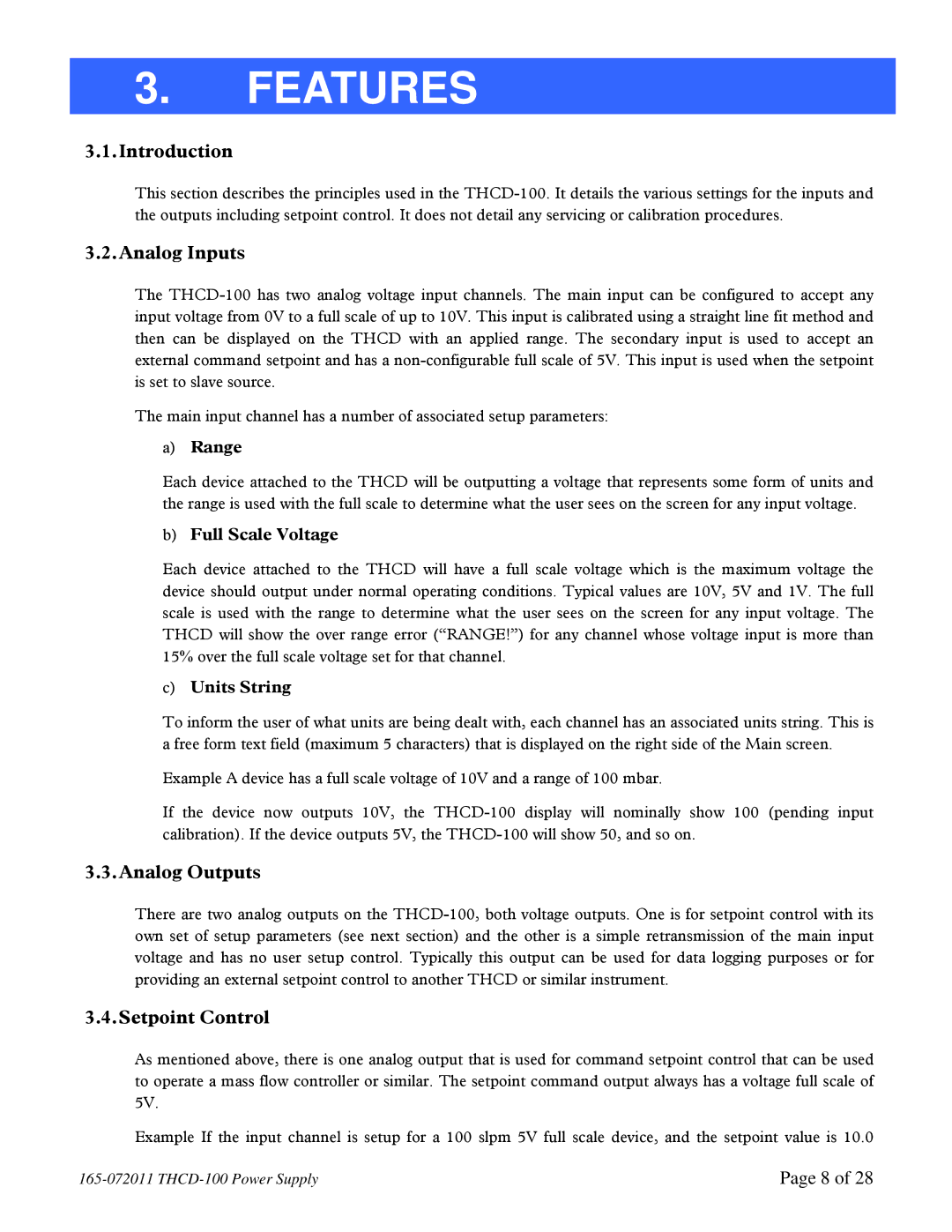3.FEATURES
3.1.Introduction
This section describes the principles used in the
3.2.Analog Inputs
The
The main input channel has a number of associated setup parameters:
a)Range
Each device attached to the THCD will be outputting a voltage that represents some form of units and the range is used with the full scale to determine what the user sees on the screen for any input voltage.
b)Full Scale Voltage
Each device attached to the THCD will have a full scale voltage which is the maximum voltage the device should output under normal operating conditions. Typical values are 10V, 5V and 1V. The full scale is used with the range to determine what the user sees on the screen for any input voltage. The THCD will show the over range error (“RANGE!”) for any channel whose voltage input is more than 15% over the full scale voltage set for that channel.
c)Units String
To inform the user of what units are being dealt with, each channel has an associated units string. This is a free form text field (maximum 5 characters) that is displayed on the right side of the Main screen.
Example A device has a full scale voltage of 10V and a range of 100 mbar.
If the device now outputs 10V, the
3.3.Analog Outputs
There are two analog outputs on the
3.4.Setpoint Control
As mentioned above, there is one analog output that is used for command setpoint control that can be used to operate a mass flow controller or similar. The setpoint command output always has a voltage full scale of 5V.
Example If the input channel is setup for a 100 slpm 5V full scale device, and the setpoint value is 10.0
Page 8 of 28 |
